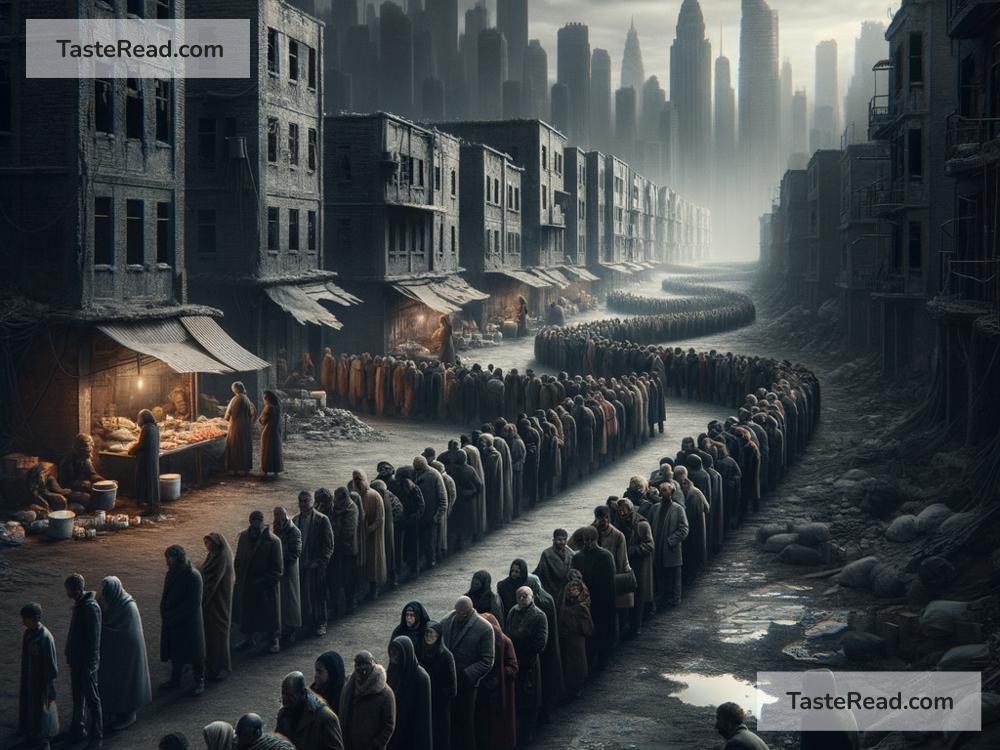Analyzing Food Scarcity in Dystopian Films
Dystopian films often show us terrifying worlds where society has fallen apart. People are forced to live under harsh conditions, struggling for survival in environments plagued by oppression, chaos, or environmental destruction. One common theme in these films is food scarcity, which plays a key role in showing how fragile human civilization can be. Food scarcity in dystopian movies is not just a backdrop—it can drive the story, shape characters, and make us think deeply about our current world.
What Is Food Scarcity?
Food scarcity happens when there isn’t enough food for people to live healthy lives. It can be caused by environmental disasters like droughts, floods, or pollution. Sometimes, food becomes scarce because people in power hoard resources for themselves while leaving others to suffer. War, corruption, and poor planning also contribute to food shortages. In dystopian films, food scarcity is often linked to larger problems like climate change, inequality, or oppressive governments.
Food Scarcity as a Reflection of Real Issues
While dystopian films are fictional, they often reflect real-world challenges. Today, millions around the world face food insecurity due to poverty, climate change, and war. Droughts and extreme weather events disrupt farming, while economies can collapse, leaving communities unable to afford basic resources. By showing these problems on screen, dystopian films challenge viewers to think about solutions—and warn us about what could happen if we ignore these issues.
Food Scarcity Driving the Plot in Dystopian Films
Many dystopian films use food scarcity as a major plot point. It isn’t just a backdrop for the story—it actively shapes the decisions characters make and the direction the film takes.
-
The Hunger Games (2012): Food scarcity defines life in Panem, where the poorest districts struggle to survive and are forced to compete in brutal fights called the Hunger Games. The Capitol, a wealthy center of power, lives in luxury while hoarding food and resources. This stark contrast highlights inequality and the control food has over society. For Katniss Everdeen, the protagonist, hunting and gathering food in the wild becomes a survival skill that sets her apart.
-
Snowpiercer (2013): Snowpiercer shows a world where Earth has frozen over, and the last survivors live aboard a moving train. Food scarcity is a key theme, especially for the passengers in lower-class sections. They are fed disgusting protein bars, while the upper-class passengers eat extravagant meals. This division of resources emphasizes class struggles and the injustices of power.
-
Mad Max: Fury Road (2015): In the dry, barren wasteland of Mad Max, water and food are scarce and tightly controlled by a dictator named Immortan Joe. People are desperate to survive, and control over resources determines who holds power. Fury Road connects food and water scarcity with environmental destruction, echoing real-world fears about climate change.
-
Children of Men (2006): While this film focuses on a world where humans can no longer reproduce, food scarcity subtly impacts the story. Society collapses under pressure, and food becomes harder to access. Scenes of rural farming contrast with city chaos, hinting at the fragile balance between nature and human survival.
How Food Scarcity Shapes Characters
When food becomes hard to find, characters show us their true selves. Some fight for justice and try to share resources fairly, while others turn greedy or violent. In dystopian films, food scarcity pushes people to make tough choices, forcing us to question how we might act under similar circumstances.
For example, in The Hunger Games, Katniss sacrifices herself to protect her sister. Her ability to find food in the wild shows her resilience and independence. On the other hand, in Snowpiercer, people in lower-class sections struggle to rise up against oppression, revealing both their bravery and the horrors of desperation.
Warning About the Future
Dystopian films act as warnings, asking viewers to consider what might happen if society continues down dangerous paths. Food scarcity in these movies serves as a powerful symbol of what could go wrong if we fail to care for the planet, prioritize equality, or build sustainable food systems. These films remind us to take action in the present so we can avoid crises in the future.
Lessons for the Real World
While dystopian films are extreme and fictional, they teach us lessons about the importance of food security. Here are a few key takeaways:
-
Sustainable Practices: Protecting the environment is critical to ensuring a stable food supply. Pollution, deforestation, and overuse of resources contribute to food scarcity.
-
Equity in Distribution: Food scarcity isn’t always about lack of food—it’s often about inequality. Governments and global leaders must work to fairly distribute resources so everyone has enough to survive.
-
Preparedness for Crisis: Films show us how quickly society can crumble under pressure. Investing in food systems that can handle crises—like droughts or disasters—is essential for long-term survival.
Conclusion
Food scarcity in dystopian films serves as a stark reminder of humanity’s vulnerability. These movies use fictional worlds to highlight real fears, showing us how food shortages could lead to chaos, inequality, and suffering. By analyzing these films, we can better understand the connection between food, power, and survival—and start addressing the challenges we face in building a fair and sustainable world.
So next time you watch a dystopian film, pay close attention to how food scarcity shapes the story. It’s not just a dramatic element—it’s a reflection of deeper truths about humanity, the planet, and the choices we make for the future.


